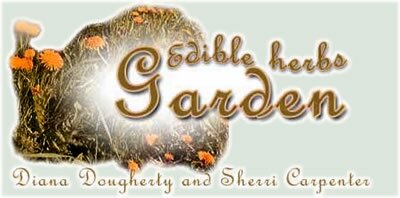|

Winter Cress
Barbarea vulgaris
Uses
Parts used: leaves, leaves, flowers, buds raw or cooked but better for you raw.
Healing
The leaves, when made as a poultice, assist in healing of wounds by protecting against infection and stimulating cell growth. A tea made from the leaves is a appetizer, diuretic and was used to counteract scurvy.
Nutrition
Vitamins A and C plus the minerals iron, calcium, thiamine, riboflavin and niacin.
Cultivation
Plant seeds in two-week intervals as soon as the ground can be worked. Cover seeds 1/4 to 1/2 inch deep. When planted late in the season can bolt rather fast. Like moist soil and cool growing conditions.
Comments
Has a cress-like flavor. Harvest flowers before opening and cook like broccoli.
Seed or plant sources.
http://www.richters.com/
http://www.gardenmedicinals.com/
Water cress
Nasturtium officinale
Uses
Parts used: Leaves, stems
Healing
Acts as a gentle diuretic, good for the kidneys, bladder and urinary tract and by relieving fluid retention. Pureed and mixed with sea salt can be used externally for qout and arthritis. Helps to relieve indigestion and expel gas. Act as an expectorant with coughs and bronchititis
Nutrition
It is a good source for beta carotene, iron and calcium. It contains vitamins, C, E, B1 ,and B2 and bioflavonoids along with the minerals phosphorus, sodium, iodine, manganese, sulfur, zinc, copper, cobalt and vanadium
Cultivation
Quick and easily grown from seed. Usually 12 to 20 days. Sow 10 to 15 seeds per foot of row every 2 weeks as soon as the ground can be worked. Plants sown after May 31 may bolt fast. Planting can continue after Labor Day and on till Thanksgiving providing frost has not yet come to play. Can be grown in sun to shade. Likes it real moist and if possible by or in a pond.
Comments
It suggested in one book that you shouldn’t eat water cress raw that has been collected by a water source until you have the water tested. You can risk infection by pathogenic microorganisms.
Harvest before flowering to avoid more of a bite.
Seed or plant sources.
www.kitchengardenseed.com
www.outdoortuff.com
Wild Lettuce
Hairy lettuce Lactuca hirsute
Prickly lettuce Lactuca scariola
Wild or tall lettuce Lactuca Canadensis
Parts used:
leaves, cooked or raw
Healing
Cooling and refreshing properties for calming over activity or over stimulation.
For treating coughs often in combination with liquorice. A mild diaphoretic and diuretic. May also be used as a mild pain reliever.
Nutrition
Vitamins A & C, potassium, iron, some folate, fiber, flavonoids and coumarins
Cultivation
It prefers a rich, loose, well-drained soil, but can grow almost anywhere with frequent watering. Can be sown thickly in rows and thinning to 18 inches apart
Comments
Lactuca virosa is called opium lettuce. It is said to have slight narcotic properties in the milky sap. Some sources say it’s true while some dispute the fact.
Seed or plant sources.
Seeds: www.ethnobotanicals.com/PureLandCatalogHL.html
Wild Mustard
Brassia nigra (Black Mustard);
Brassia rapa (Field or Wild mustard)
Sisymbrium officianle (Hedge Mustard)
Uses
Parts used: leaves, seeds, seed pod and flowers.
Healing
Stimulates appetite and aids in digestion. Stimulates circulation aids in chest congestion, toothache, headache, a poultice made from the seeds helps to relieve sprains and rheumatism (if left on too long can cause irritation). Has heating characteristics.
Nutrition
Contains vitamins A, C, B1, and B2 . Has lots of calcium, potassium and magnesium which helps to regulate cholesterol and blood sugar levels. Also has isothiocyanates, beta carotene and fiber, good sources for helping to prevent cancer. The flower buds are a good source of protein.
Cultivation
Prefers full sun and well drained soil. The plants are annual and should be planted in early spring or for mild winters late fall. Seeds can be started between two pieces of wet cloth. Careful with this plant as it can spread quickly and take over an area.
Comments
The leaves are edible when they first appear. On some species the older leaves can be bitter while others are good all season long. Use the seeds to make mustard.
Seed or plant sources.
www.gardenmedicinals.com
|